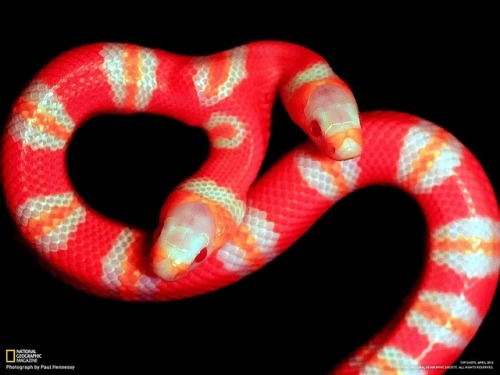Solar System: Things To Know This Week
Solar System: Things to Know This Week
Mark your calendars for summer 2018: That’s when we’re launching a spacecraft to touch the sun.
In honor of our first-ever mission to the heart of the solar system, this week we’re delving into the life and times of this powerful yellow dwarf star.

1. Meet Parker
Parker Solar Probe, our first mission to go to the sun, is named after Eugene Parker, an American astrophysicist who first theorized that the sun constantly sends out a flow of particles and energy called the solar wind. This historic mission will explore one of the last regions of the solar system to be visited by a spacecraft and help scientists unlock answers to questions they’ve been pondering for more than five decades.

2. Extra SPF, Please
Parker Solar Probe will swoop within 4 million miles of the sun’s surface, facing heat and radiation like no spacecraft before it. The mission will provide new data on solar activity to help us better understand our home star and its activity - information that can improve forecasts of major space-weather events that could impact life on Earth.

3. Majorly Massive
The sun is the center of our solar system and makes up 99.8 percent of the mass of the entire solar system. If the sun were as tall as a typical front door, Earth would be about the size of a nickel.
4. Different Spin
Since the sun is not a solid body, different parts of the sun rotate at different rates. At the equator, the sun spins once about every 25 days, but at its poles the sun rotates once on its axis every 36 Earth days.

5. Can’t Stand on It
The sun is a star and a star doesn’t have a solid surface. Rather, it’s a ball of ionized gas 92.1% hydrogen (H2) and 7.8% helium (He) held together by its own gravity.
6. Center of Attention
The sun isn’t a planet, so it doesn’t have any moons. But, the sun is orbited by eight planets, at least five dwarf planets, tens of thousands of asteroids, and hundreds of thousands to trillions of comets and icy bodies.

7. It’s Hot in There
And we mean really, really hot. The temperature at the sun’s core is about 27 million degrees Fahrenheit. However, its atmosphere, the corona, can reach temperatures of 3 million degrees. (That’s as if it got hotter the farther away you got from a fire, instead of cooler!) Parker Solar Probe will help scientists solve the mystery of why the corona’s temperature is so much higher than the surface.

8. Travel Conditions
The sun influences the entire solar system, so studying it helps us better understand the space weather that our astronauts and spacecraft travel through.
9. Life on the Sun?
Better to admire from afar. Thanks to its hot, energetic mix of gases and plasma, the sun can’t be home to living things. However, we can thank the sun for making life on Earth possible by providing the warmth and energy that supply Earth’s food chain.
10. Chance of a Lifetime
Last but not least, don’t forget that the first total solar eclipse to sweep across the U.S. from coast-to-coast since 1918 is happening on August 21, 2017. Our toolkit has you need to know to about it.
Want to learn more? Read our full list of the 10 things to know this week about the solar system HERE.
Make sure to follow us on Tumblr for your regular dose of space: http://nasa.tumblr.com
More Posts from Evisno and Others

A Glowing Pool Of Light
"NGC 3132 is a striking example of a planetary nebula. This expanding cloud of gas, surrounding a dying star, is known to amateur astronomers in the southern hemisphere as the "Eight-Burst" or the "Southern Ring" Nebula.
The name “planetary nebula” refers only to the round shape that many of these objects show when examined through a small visual telescope. In reality, these nebulae have little or nothing to do with planets, but are instead huge shells of gas ejected by stars as they near the ends of their lifetimes. NGC 3132 is nearly half a light year in diameter, and at a distance of about 2000 light years is one of the nearer known planetary nebulae. The gases are expanding away from the central star at a speed of 9 miles per second.
This image, captured by NASA’s Hubble Space Telescope, clearly shows two stars near the center of the nebula, a bright white one, and an adjacent, fainter companion to its upper right. (A third, unrelated star lies near the edge of the nebula.) The faint partner is actually the star that has ejected the nebula. This star is now smaller than our own Sun, but extremely hot. The flood of ultraviolet radiation from its surface makes the surrounding gases glow through fluorescence. The brighter star is in an earlier stage of stellar evolution, but in the future it will probably eject its own planetary nebula”
Credit: The Hubble Heritage Team








5 Vital Lessons Scientists Learn That Can Better Everyone’s Life
“4. Following your intuition will never get you as far as doing the math will. Coming up with a beautiful, powerful and compelling theory is the dream of many scientists worldwide, and has been for as long as there have been scientists. When Copernicus put forth his heliocentric model, it was attractive to many, but his circular orbits couldn’t explain the observations of the planets as well as Ptolemy’s epicycles – ugly as they were – did. Some 50 years later, Johannes Kepler built upon Copernicus’ idea and put forth his Mysterium Cosmographicum: a series of nested spheres whose ratios could explain the orbits of the planets. Except, the data didn’t fit right. When he did the math, the numbers didn’t add up.”
There are a lot of myths we have in our society about how the greatest of all scientific advances happened. We think about a lone genius, working outside the constraints of mainstream academia or mainstream thinking, working on something no one else works on. That hasn’t ever really been true, and yet there are actual lessons – valuable ones – to be learned from observing scientists throughout history. The greatest breakthroughs can only happen in the context of what’s already been discovered, and in that sense, our scientific knowledge base and our best new theories are a reflection of the very human endeavor of science. When Newton claimed he was standing on the shoulders of giants, it may have been his most brilliant realization of all, and it’s never been more true today.
Come learn these five vital lessons for yourself, and see if you can’t find some way to have them apply to your life!

The Great Nebula in Carina : In one of the brightest parts of Milky Way lies a nebula where some of the oddest things occur. NGC 3372, known as the Great Nebula in Carina, is home to massive stars and changing nebulas. The Keyhole Nebula , the bright structure just above the image center, houses several of these massive stars and has itself changed its appearance. The entire Carina Nebula spans over 300 light years and lies about 7,500 light-years away in the constellation of Carina. Eta Carinae, the most energetic star in the nebula, was one of the brightest stars in the sky in the 1830s, but then faded dramatically. Eta Carinae is the brightest star near the image center, just left of the Keyhole Nebula. While Eta Carinae itself maybe on the verge of a supernova explosion, X-ray images indicate that much of the Great Carina Nebula has been a veritable supernova factory. via NASA
js
Why Bennu?
Our OSIRIS-REx spacecraft will travel to a near-Earth asteroid, called Bennu, where it will collect a sample to bring back to Earth for study.
But why was Bennu chosen as the target destination asteroid for OSIRIS-REx? The science team took into account three criteria: accessibility, size and composition.

Accessibility: We need an asteroid that we can easily travel to, retrieve a sample from and return to Earth, all within a few years time. The closest asteroids are called near-Earth objects and they travel within 1.3 Astronomical Units (AU) of the sun. For those of you who don’t think in astronomical units…one Astronomical Unit is approximately equal to the distance between the sun and the Earth: ~93 million miles.

For a mission like OSIRIS-REx, the most accessible asteroids are somewhere between 0.08 – 1.6 AU. But we also needed to make sure that those asteroids have a similar orbit to Earth. Bennu fit this criteria! Check!
Size: We need an asteroid the right size to perform two critical portions of the mission: operations close to the asteroid and the actual sample collection from the surface of the asteroid. Bennu is roughly spherical and has a rotation period of 4.3 hours, which is in our size criteria. Check!

Composition: Asteroids are categorized by their spectral properties. In the visible and infrared light minerals have unique signatures or colors, much like fingerprints. Scientists use these fingerprints to identify molecules, like organics. For primitive, carbon-rich asteroids like Bennu, materials are preserved from over 4.5 billion years ago! We’re talking about the start of the formation of our solar system here! These primitive materials could contain organic molecules that may be the precursors to life here on Earth, or elsewhere in our solar system.

Thanks to telescopic observations in the visible and the infrared, as well as in radar, Bennu is currently the best understood asteroid not yet visited by a spacecraft.
All of these things make Bennu a fascinating and accessible asteroid for the OSIRIS-REx mission.
Make sure to follow us on Tumblr for your regular dose of space: http://nasa.tumblr.com










Polycephaly is the condition of having more than one head. Two-headed animals (called bicephalic or dicephalic) and three-headed (tricephalic) animals are the only type of multi-headed creatures seen in the real world, and form by the same process as conjoined twins from monozygotic twin embryos.
While two headed snakes are rare, they do occur in both the wild and in captivity at a rate of about 1 in 10,000 births. Most wild polycephalic snakes do not live long, but some captive individuals do. A two-headed black rat snake with separate throats and stomachs survived for 20 years.
(Sources: x x x x x x x x)
![WATCH: Crystal Birth, A Beautiful Timelapse Of Metallic Crystals Forming In Chemical Solutions [video]](https://64.media.tumblr.com/a6b789bd547bb0fc1e3119df87332f1a/tumblr_oghrhqfMiX1rte5gyo2_500.gif)
![WATCH: Crystal Birth, A Beautiful Timelapse Of Metallic Crystals Forming In Chemical Solutions [video]](https://64.media.tumblr.com/0c08f977f51ba218837b72a94f7bbd69/tumblr_oghrhqfMiX1rte5gyo4_500.gif)
![WATCH: Crystal Birth, A Beautiful Timelapse Of Metallic Crystals Forming In Chemical Solutions [video]](https://64.media.tumblr.com/94f32be0db445db0cdfe2546b015295b/tumblr_oghrhqfMiX1rte5gyo1_500.gif)
![WATCH: Crystal Birth, A Beautiful Timelapse Of Metallic Crystals Forming In Chemical Solutions [video]](https://64.media.tumblr.com/333f1f1da60d5ff8500aa7a751dba6c4/tumblr_oghrhqfMiX1rte5gyo3_500.gif)
WATCH: Crystal Birth, a Beautiful Timelapse of Metallic Crystals Forming in Chemical Solutions [video]


Drops of a liquid can often join a pool gradually through a process known as the coalescence cascade (top left). In this process, a drop sits atop a pool, separated by a thin air layer. Once that air drains out, contact is made and part of the drop coalesces. Then a smaller daughter droplet rebounds and the process repeats.
A recent study describes a related phenomenon (top right) in which the coalescence cascade is drastically sped up through the use of surfactants. The normal cascade depends strongly on the amount of time it takes for the air layer between the drop and pool to drain. By making the pool a liquid with a much greater surface tension value than the drop, the researchers sped up the air layer’s drainage. The mismatch in surface tension between the drop and pool creates an outward flow on the surface (below) due to the Marangoni effect. As the pool’s liquid moves outward, it drags air with it, thereby draining the separating layer more quickly. The result is still a coalescence cascade but one in which the later stages have no rebound and coalesce quickly. (Image and research credit: S. Shim and H. Stone, source)

If it is just us, seems like an awful waste of space.
Carl Sagan (from Contact)






Comments of the Week #92: from the Universe’s birth to ten decades of science
“[I]f there were antimatter galaxies out there, then there should be some interface between the matter and antimatter ones. Either there would be a discontinuity (like a domain wall) separating the two regions, there would be an interface where gamma rays of a specific frequency originated, or there would be a great 2D void where it’s all already annihilated away.
And our Universe contains none of these things. The absence of them in all directions and in all locations tells us that if there are antimatter galaxies out there, they’re far beyond the observable part of our Universe. Instead, every interacting pair we see shows evidence that they’re all made of matter. Beautiful, beautiful matter.”
There’s no better way to start 2016 than… with a bang! Come check out our first comments of the week of the new year.
-
 cheeseforsalvation reblogged this · 4 years ago
cheeseforsalvation reblogged this · 4 years ago -
 revelationaryheroics liked this · 4 years ago
revelationaryheroics liked this · 4 years ago -
 rkfkrkfkfh liked this · 5 years ago
rkfkrkfkfh liked this · 5 years ago -
 lonestarfangirl2014 liked this · 6 years ago
lonestarfangirl2014 liked this · 6 years ago -
 theonewiththe-whales liked this · 6 years ago
theonewiththe-whales liked this · 6 years ago -
 solar-butch reblogged this · 6 years ago
solar-butch reblogged this · 6 years ago -
 washingmachineonfir liked this · 6 years ago
washingmachineonfir liked this · 6 years ago -
 thatkiddcharles liked this · 6 years ago
thatkiddcharles liked this · 6 years ago -
 pepdart liked this · 7 years ago
pepdart liked this · 7 years ago -
 phyar liked this · 7 years ago
phyar liked this · 7 years ago -
 90sfilmbuff liked this · 7 years ago
90sfilmbuff liked this · 7 years ago -
 dreamyangtianqi liked this · 7 years ago
dreamyangtianqi liked this · 7 years ago -
 jamesjunghanns liked this · 7 years ago
jamesjunghanns liked this · 7 years ago -
 metaphysikal reblogged this · 7 years ago
metaphysikal reblogged this · 7 years ago -
 yourstrulysha liked this · 7 years ago
yourstrulysha liked this · 7 years ago -
 sabrinatristan reblogged this · 7 years ago
sabrinatristan reblogged this · 7 years ago -
 gglennw reblogged this · 7 years ago
gglennw reblogged this · 7 years ago -
 lullipathstorvhua-blog liked this · 7 years ago
lullipathstorvhua-blog liked this · 7 years ago -
 thris69ever liked this · 7 years ago
thris69ever liked this · 7 years ago -
 mistermaf liked this · 7 years ago
mistermaf liked this · 7 years ago -
 calcconverter liked this · 7 years ago
calcconverter liked this · 7 years ago
